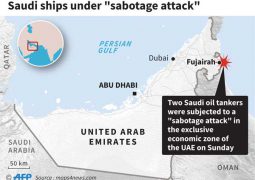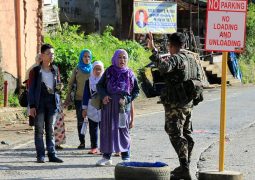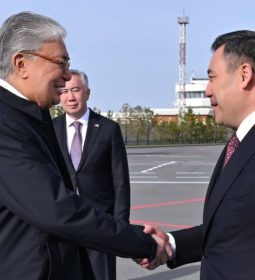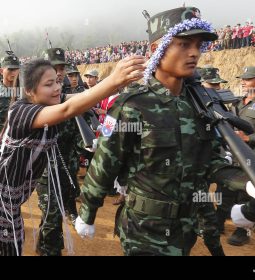The new Malay heartland

By Liew Chin Tong
ONE of the popular political myths in Peninsular Malaysia is the belief that Malays are rural people while the urban is the domains of the Chinese and Indians.
By extension of the logic, urban is deemed rich and rural is poor, hence urban-based Chinese and Indians are rich while rural-based Malays are poor.
Nothing could be further from the truth. The new Malay heartland is Kuala Lumpur’s Kampung Kerinchi, Desa Mentari, the numerous terraces, low- and medium-cost apartments and flats in Ampang, Bangi, Gombak, Kajang, Shah Alam, and many of the state capitals and bigger towns in the peninsular.
The urban Malays are now the deciders of national elections in ways most political leaders somehow know but have yet to fully acknowledge.
Politicians have also yet to integrate the demographic reality into public policy, particularly in our thinking about the economy.
For now, public policy does not seem to understand urban Malaysia sufficiently, therefore the needs and aspirations of urban Malays are not given adequate attention.
A friend of mine was passionately trying to bring his “Bangsar bubble” acquaintances to visit kampung in Johor, Perak and Pahang to see “the Malay heartland”.
He was stunned when I told him the new Malay heartland is just next door in Kampung Kerinchi.
URBAN-RURAL DIVIDE
When the Election Commission under Datuk Seri Najib Razak’s administration decided to have a polling day for the 2018 general election on a Wednesday, instead of the usual Saturday, it was clear that the then Barisan Nasional government knew the voting trend of those who live in urban areas who would cast their votes in their respective hometowns.
BN leaders knew that the national swing voters who stayed in Kuala Lumpur, Singapore, Johor Baru, Penang and other major towns would decide the outcome of the election, and hence they should be prevented from returning to their kampung to vote.
Like most parts of the world — Japan, Australia and the United States — the agrarian communities in rural areas are more dependent on subsidies and support from the government, and thus usually more supportive of the establishment.
BN parties were well entrenched in rural areas as a service-oriented machinery that even seats were delineated to favour a rural weightage.
But demography pulls the rug from under the feet of such calculus. Situations have changed.
For example, when I contested at the small-town Kluang parliamentary seat in 2013, I told my local staffers to inform me of the traffic condition on the eve of polling day.
There were so many cars into Kluang on that day. I told my team I was confident of winning on the back of urban voters returning to vote.
Another example is when the Johor water authority SAJ had to work harder on certain special occasions.
SAJ is one of the very few government agencies that gave me regular reports on its operations when we were still in opposition.
I was amazed to notice that SAJ had to pump a huge amount of water into Felda settlements and kampung whenever thousands of urban folks “balik kampung” for Hari Raya.
To put this in context, I joked that on weekdays, the average age of central and northern Johor towns and villages is 55 years old, on weekends it becomes 35, and on festive seasons like Hari Raya, Chinese New Year or Deepavali it is 15!
Yet another example is that schools in small towns are seeing the number of students declining quite drastically in the past two decades.
URBAN-RURAL LINK
When I decided in January 2018 to contest the semi-urban Ayer Hitam parliamentary seat, my team commissioned a thorough qualitative survey which interviewed those who stayed in their kampung as well as their children who were in Kuala Lumpur.
There is clearly a remittance economy of sort happening between urban and rural Malaysia, especially among the Malays.
At that time, the economic grouses against the Najib government can be summed up as follows :
FEDERAL budget was cut massively in 2015, 2016 and 2017 as the oil crunch in October 2014 plunged petrol prices by 30 per cent; civil servants’ allowances, school meals and subsidies were cut, resulting in the bottling up of anger;
GOODS and Services Tax (GST) as implemented in April 2015, eating into the already limited disposable income of households further fuelling anger; and,
AS oil prices came down prices of commodities, particularly palm oil, went down.
Many older families who resided in Ayer Hitam told our researchers that they faced a double whammy — palm oil prices came down at a time their children in urban areas were struggling to feed themselves, hence cutting remittances to home.
The younger ones who stayed in Kuala Lumpur while voting in Ayer Hitam complained that they felt ashamed for having to cut back on remittances as they themselves suffered from higher cost of living due to GST and a far less vibrant market as everyone cut back on their spending.
This cohort was disgusted by Najib and his wife, Datin Seri Rosmah Mansor, extravagance and alleged grand corruption.
The urban-rural link is more symbiotic than most people realise, and that realisation has huge political consequences.
REFOCUSING STRATEGIES
A thinking Umno leader once told me that if given a chance he would do a “reverse Liew Chin Tong” to take on one of the Kuala Lumpur parliamentary seats.
He was implying that he knew Pakatan Harapan’s strength was in urban areas and to win power, Pakatan had to push its way into semi-urban areas whereas Umno’s strength is in the rural sector and in order to win power, it has to win in urban and semi-urban areas.
Out of the 20.07 million national Bumiputera population (Sabah and Sarawak included), 13.93 million Bumiputeras resided in urban Malaysia, which means 69.37 per cent of Bumiputeras are urban folks.
If one only looks at the statistics for Peninsular Malaysia, the percentage should be even higher.
It is time for us to recognise that it is Kampung Kerinchi and other similar areas that are the new Malay heartland, for the political and welfare consequences of such understanding are far-reaching.
Beyond politics, for public policy in Malaysia to move forward, one important mental hurdle that we have to cross is to begin seeing the Malays as mostly an urban people.
This is the reality of a new Malay heartland.
The writer is deputy defence minister
- Previous Daxing airport opens as China’s first airport shuts its doors in Beijing after 109 years
- Next Erdogan accuses Khashoggi’s killers of enjoying ‘impunity’ in Washington Post column
















